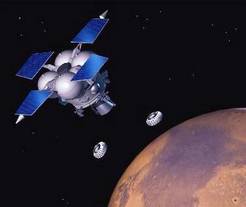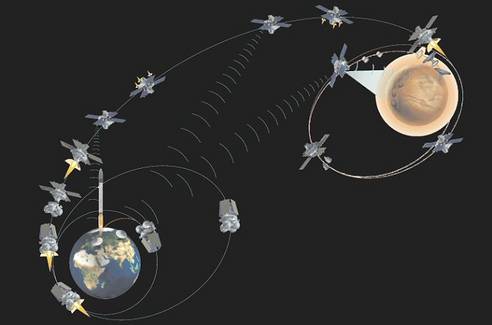
Precursor Mission Overview
The design of the MetNet Lander (MNL) was started in August 2000. The main idea behind the MetNet landing vehicles is to use state-of-the-art inflatable entry and descent systems instead of rigid heat shields and parachutes as earlier semi-hard landing devices have used. This way the ratio of the payload mass to the overall mass is optimized, and more mass and volume resources are spared for the science payload. Five different descent system scenarios have been investigated and the behaviour of technological solutions of the chosen descent system scenario has been extensively numerically simulated. In 2002/2003 the new descent system prototype was manufactured. Key parts of it have been successfully tested in the wind tunnels and exposed to heat fluxes simulating the conditions the system will encounter during the entry into the Martian atmosphere.
- Piggyback delivery attached to the Russian Phobos Sample Return mission.
The mission
The main phases of the mission of a MetNet Lander are as follows:
- injection of the carrier spacecraft/MetNet Lander combination to a transit trajectory to Mars by means of a launch vehicle
- Earth-Mars transit
- separation of the MetNet Lander from the carrier spacecraft
- MetNet Lander autonomous flight
- MetNet Lander entry into the Martian atmosphere
- aerodynamic braking in the Martian atmosphere
- MetNet Lander landing onto the Martian surface
- Surface deployment or initial operations
- Long-term surface operations




